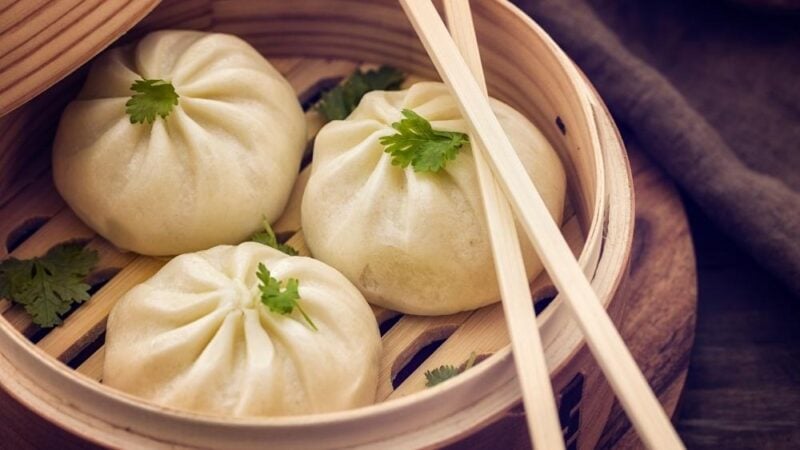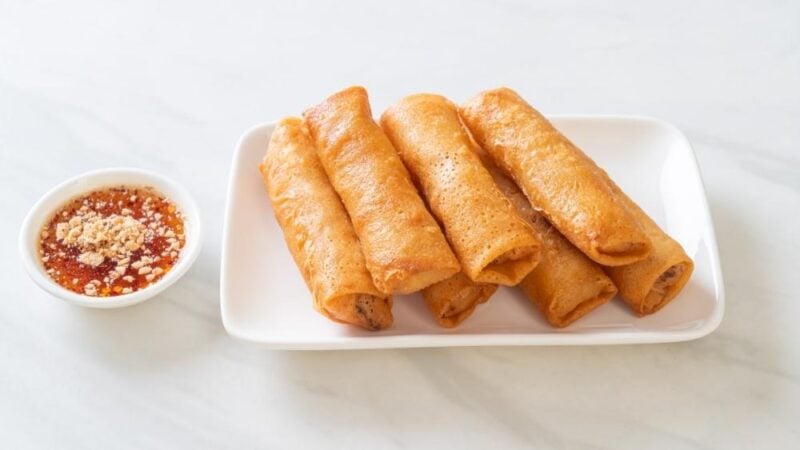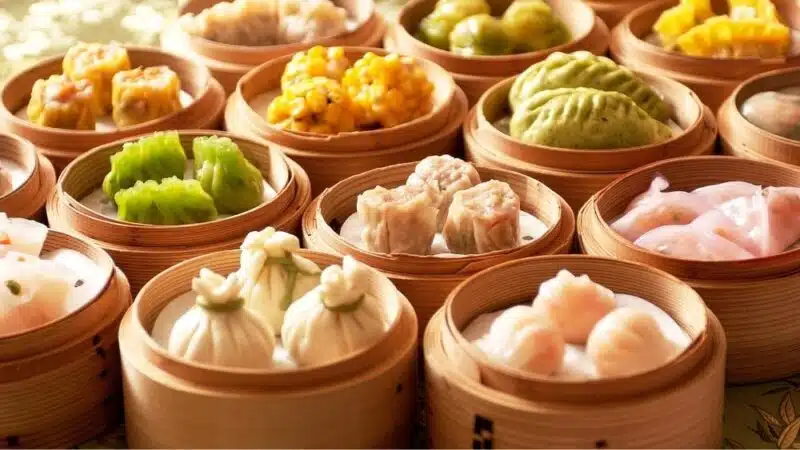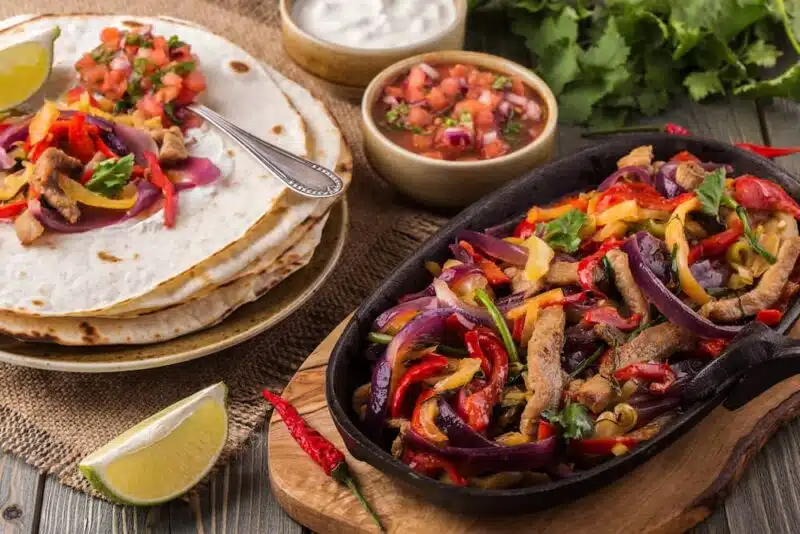Welcome to a new culinary journey at Paulina Cocina! On this journey, we'll explore the wonderful world of dim sum, a wide variety of flavorful and stylish dishes that Eastern cuisine offers.
In this article, we'll explore the universe of this Cantonese creation, from its history and significance to the variety of savoring options available, so you can discover what makes these little delicacies so special. Let's travel!
Content table
What is dim sum?
Before we dive into the history and varieties of this dish, let's start with the basics. The term " dim sum " literally translates to "touch the heart" in Chinese, and this name couldn't be more appropriate. Dim sum isn't a single dish, but rather a variety of small bites that, as the name suggests, touch the hearts of those who try them.
They are a real feast for the palate, made up of a wide range of small culinary delights, ranging from dumplings to steamed cakes and spring rolls .
History and origin of Chinese dim sum
The history of this snack dates back to the ancient Silk Road in China. Although there is no absolute consensus on its origin, it is believed that these delicious snacks originated in the teahouses of the Canton region, where travelers and merchants would stop to rest and enjoy a cup of tea.
Thus, tea houses began serving small snacks to accompany tea, marking the beginning of the dim sum tradition. As Chinese culture spread throughout the world, so did dim sum. Today, these snacks are popular all over the globe, from North America to Europe.

What type of cuisine is dim sum?
Dim sum is a true reflection of Chinese cuisine, with a strong influence from the Canton region. The flavors are varied and often include combinations of both sweet and savory.
Dim sum is much more than just a meal; it's a unique culinary experience that combines flavors, textures, and traditions. From its humble origins in Chinese teahouses to its global popularity, it has won the palates and hearts of those seeking an unforgettable gastronomic experience.
What's in dim sum?
A distinctive feature of dim sum is its versatility and ability to adapt to different tastes. Ingredients vary, but some common elements include pork, shrimp, crab, mushrooms, bamboo shoots, and leafy vegetables.
The flavors are enhanced with soy sauce, rice vinegar, sesame oil, and other traditional Chinese seasonings. Presentation is also important, as dim sum dishes are often visually appealing and appetizing.
The cooking methods are also very varied, and can be steamed, grilled, fried or boiled, with or without broth.
How to prepare dim sum
Preparing dim sum is a masterpiece in itself , and its preparation is a combination of art and science. Each variety requires a specific technique for shaping the dough, filling it, sealing it, and cooking it.
The ingredients are carefully selected to ensure freshness and quality, resulting in exceptional flavors. A truly unique experience to enjoy in a good Chinese or Cantonese restaurant, and why not, to inspire you to prepare one of the many varieties at home.
Follow on Instagram ( here )
and on YouTube that I upload new videos every week ( click here )
13 different types of Dim Sum
The diversity of dim sum is astonishing , as these bites can be enjoyed at various times of the day. Chinese chefs have developed a wide variety of recipes over the years, and the choice is almost endless.
Some of the varieties that can be found on the menus of Chinese and dim sum restaurants around the world are:
- Siu Mai: These open-sided pork and shrimp dumplings are one of the most iconic dim sum dishes. They're often garnished with a small amount of fish roe.
- Har Gow: These steamed dumplings are filled with fresh shrimp and are often served in a thin layer of translucent rice dough.
- Char Siu Bao: Also known as baozi, these are Chinese-style roast pork-filled buns. The dough is soft and fluffy, and the filling is sweet and sour.
- Cheung Fun: These are steamed rice rolls filled with ingredients like roast pork, shrimp, or beef. They're served with a sweet soy sauce.
- Xiao Long Bao: Originally from Shanghai, these steamed dumplings are characterized by their hot and juicy broth inside, as well as pork or crab meat.
- Gai Lan: These are steamed Chinese broccoli sprouts, seasoned with garlic and sesame oil.
- Wu Gok: These are fried cassava rolls filled with pork, mushrooms, and other savory ingredients. They have a crispy texture on the outside and a soft filling on the inside.
- Taro Tots: These are crispy, fried taro balls that are often filled with pork or shrimp.
- Lo Bak Go: Also known as radish dumplings, these dumplings are made with grated radish and steamed before being fried. They are usually served sliced.
- Ngao Yuk Kau: These are dumplings filled with beef, often with a touch of ginger and scallions.
- Fung Jao: These are rice dumplings filled with mushrooms, pork, and other seasoned ingredients.
- Wonton: These dumplings are filled with pork or shrimp and served in a tasty hot soup.
- Fan Tuan: A glutinous rice dumpling filled with various ingredients, such as egg, pork, and seasonings.






